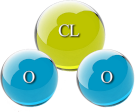CDS protocols: Difference between revisions
Created page with "== CDS protocols == ==== A) AMATEUR (...or doubtful beginner) ==== ● Protocol A = 5 ml of CDS (0.3% = 3000 ppm) per dose. This is indicated in case of hesitation to initiate. The first dose is 2 ml of CDS mixed with 200 ml of water, taken before going to sleep on the first day of treatment. On the second day, 3 ml of CDS should be taken in 1 liter of water, divided into 5 intakes spread throughout the day. Subsequently, increase by 1 ml per day until reaching 5 ml..." |
No edit summary |
||
| (6 intermediate revisions by the same user not shown) | |||
| Line 1: | Line 1: | ||
== CDS protocols == | == CDS protocols == | ||
Currently, we no longer use the two-component CD, which is also known as MMS, as it has unfortunately become outdated over time due to various factors. Its usage can lead to several adverse effects, including symptoms such as diarrhea or vomiting, which can be quite uncomfortable and concerning for users. Additionally, this two-component solution has a more acidic pH level, and it contains sodium chlorite, an ingredient that can potentially cause secondary reactions in the stomach, leading to further complications. | |||
On the other hand, CDS, which stands for Chlorine Dioxide Solution (ClO2), contains only one single component, which is simply gas that is dissolved in water. This formulation has the advantage of possessing a neutral pH, making it less likely to cause digestive issues. Furthermore, it does not contain chlorite salts, which helps to eliminate the risks associated with the two-component product. | |||
For these compelling reasons, along with many others that have been taken into careful consideration, we have updated our protocols based on hundreds of thousands of volunteer user testimonials and reports that have been collected and analyzed over a span of more than 10 years. This extensive feedback has been invaluable in guiding our decision to move towards safer and more effective alternatives for our users. | |||
[[File:Andreas Kalcker press foto.jpg|thumb]] | |||
* [[Protocol A]] ''as Amateur or Beginner'' | |||
* [[Protocol B]] ''as Bath'' | |||
* [[Protocol C]] ''as CDS (the standard protocol)'' | |||
* [[Protocol D]] ''as Dermatological (for the skin)'' | |||
* [[Protocol E]] ''as Enemas'' | |||
* [[Protocol F]] ''as Frequent or Fever'' | |||
* [[Protocol G]] ''as Gas (when only the gas is used)'' | |||
* [[Protocol H]] ''as Habitat / Room (to avoid contagion)'' | |||
* [[Protocol I]] ''as Insects stings and bites'' | |||
* [[Protocol J]] ''as Jaw/ Mouth (mouth protocol)'' | |||
* [[Protocol K]] ''as Kit, combined with 70% DMSO'' | |||
* [[Protocol L]] ''as Footwash (Footbath protocol)'' | |||
* [[Protocol M]] ''as Malaria'' | |||
* [[Protocol N]] ''as Children and Adolescents'' | |||
* [[Protocol O]] ''as Ophthalmology / Otorhinolaryngology (nasal)'' | |||
* [[Protocol P]] ''as Parasites (intense protocol)'' | |||
* [[Protocol Q]] ''as Burns'' | |||
* [[Protocol R]] ''as Rectal with bulb'' | |||
* [[Protocol S]] ''as Sensitive (with very low doses)'' | |||
* [[Protocol T]] ''as Terminal (very severe diseases)'' | |||
* [[Protocol U]] ''as Urgent'' | |||
* [[Protocol V]] ''as Vaginal (using irrigation)'' | |||
* [[Protocol W]] ''as Wau! (can also be used for...)'' | |||
* [[Protocol X]] ''as Sexual intercourse'' | |||
* [[Protocol Y]] ''as inyection of CDI'' | |||
* [[Protocol Z]] ''as Frequencies / Biotrohn®, frequency generator'' | |||
''The protocols presented here are general and based on real experiences obtained by users and volunteers, but do not represent medical advice. Each person is responsible for his or her body and should know what is best for himself or herself when lowering or increasing doses. All use of the protocols is the personal responsibility of the user. In the unlikely event of serious adverse effects, the dose should be reduced or use discontinued.'' | |||
In | |||
Latest revision as of 09:25, 29 August 2024
CDS protocols
Currently, we no longer use the two-component CD, which is also known as MMS, as it has unfortunately become outdated over time due to various factors. Its usage can lead to several adverse effects, including symptoms such as diarrhea or vomiting, which can be quite uncomfortable and concerning for users. Additionally, this two-component solution has a more acidic pH level, and it contains sodium chlorite, an ingredient that can potentially cause secondary reactions in the stomach, leading to further complications.
On the other hand, CDS, which stands for Chlorine Dioxide Solution (ClO2), contains only one single component, which is simply gas that is dissolved in water. This formulation has the advantage of possessing a neutral pH, making it less likely to cause digestive issues. Furthermore, it does not contain chlorite salts, which helps to eliminate the risks associated with the two-component product.
For these compelling reasons, along with many others that have been taken into careful consideration, we have updated our protocols based on hundreds of thousands of volunteer user testimonials and reports that have been collected and analyzed over a span of more than 10 years. This extensive feedback has been invaluable in guiding our decision to move towards safer and more effective alternatives for our users.

- Protocol A as Amateur or Beginner
- Protocol B as Bath
- Protocol C as CDS (the standard protocol)
- Protocol D as Dermatological (for the skin)
- Protocol E as Enemas
- Protocol F as Frequent or Fever
- Protocol G as Gas (when only the gas is used)
- Protocol H as Habitat / Room (to avoid contagion)
- Protocol I as Insects stings and bites
- Protocol J as Jaw/ Mouth (mouth protocol)
- Protocol K as Kit, combined with 70% DMSO
- Protocol L as Footwash (Footbath protocol)
- Protocol M as Malaria
- Protocol N as Children and Adolescents
- Protocol O as Ophthalmology / Otorhinolaryngology (nasal)
- Protocol P as Parasites (intense protocol)
- Protocol Q as Burns
- Protocol R as Rectal with bulb
- Protocol S as Sensitive (with very low doses)
- Protocol T as Terminal (very severe diseases)
- Protocol U as Urgent
- Protocol V as Vaginal (using irrigation)
- Protocol W as Wau! (can also be used for...)
- Protocol X as Sexual intercourse
- Protocol Y as inyection of CDI
- Protocol Z as Frequencies / Biotrohn®, frequency generator
The protocols presented here are general and based on real experiences obtained by users and volunteers, but do not represent medical advice. Each person is responsible for his or her body and should know what is best for himself or herself when lowering or increasing doses. All use of the protocols is the personal responsibility of the user. In the unlikely event of serious adverse effects, the dose should be reduced or use discontinued.
